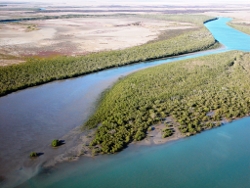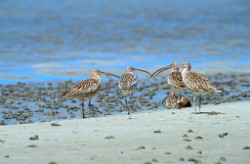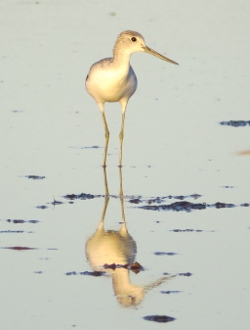|
|
Species distribution overviewQueensland contains around a quarter of Australia’s shorebirds. Approximately half of these are found in the south east Gulf of Carpentaria, making it nationally important and internationally significant within the Flyway Site Network. The concentration of shorebirds in Australia is only higher in two other places, Eighty Mile Beach and Roebuck Bay in northwest Western Australia. Queensland shorebird species - Bird wetland indicator species and profiles Select a coastal area from the map belowThe average number of shorebirds per kilometre (km) of mainland coastline varies. The most dramatic difference is between the south east Gulf of Carpentaria (highest density >200 birds per km) and Cape York Peninsula (<10 birds per km). There are generally low shorebird densities along the coastline south of Cooktown to Townsville. The remainder of the Queensland coastline has pockets of high density and, collectively, these southern parts of the State have a similar total number of shorebirds to the south east Gulf of Carpentaria. Groups of species in Queensland tend to follow similar coastal distribution patterns. For example, some species are very common along the south east Gulf of Carpentaria shoreline, whereas others are much more prevalent in southern parts of the State. Outlined below is a broad outline of the distribution and abundance of the species. The broad-billed sandpiper, black-tailed godwit and red knot, have a particularly high percentage representation in the Gulf. Medium sized flocks of red knot are recorded during the southward migration to Moreton Bay and many birds move through south-eastern Queensland to New Zealand, as well as south eastern Australia. Marsh sandpiper are very common in parts of the Gulf compared to other coastal regions, but it also uses sub-coastal and inland freshwater wetlands throughout Queensland. Red-necked stint, great knot, greater sand plover, red-capped plover and curlew sandpiper have a high percentage representation in the Gulf, but also occur in other parts of the state. Large flocks of great knot occur between Townsville and Cape Upstart, around Mackay, and to a lesser extent in Moreton Bay. Curlew sandpiper numbers indicate an uneven spread of birds in addition to the high numbers in the south east Gulf of Carpentaria. Moreton Bay has high numbers of this species in comparison to other regions. Another group of species, grey-tailed tattler, eastern curlew, bar-tailed godwit and whimbrel, have their highest numbers in the southern parts of the state. Over three quarters of their state-wide populations seem to occur south from Shoalwater Bay to Moreton Bay. Fewer than about 10% of any of these species in Queensland occur in the south east Gulf of Carpentaria. Terek sandpiper and common greenshank tend to occur in higher numbers in southern regions but the trend is not as obvious. For example, across the state there are high numbers of terek sandpiper in Shoalwater Bay and in the Great Sandy Strait, as well as in the south east Gulf of Carpentaria. Finally, grey plover, pacific golden plover, lesser sand plover, sharp-tailed sandpiper and ruddy turnstone appear to be distributed more evenly along the east coast, as well as occurring in high numbers in the south east Gulf of Carpentaria. Nevertheless, lesser sand plover and sharp-tailed sandpiper numbers tend to be relatively higher between Townsville and Mackay than in south-eastern Queensland. In Moreton Bay, sharp-tailed sandpiper are recorded in higher numbers during southward migration when many are traveling through to New South Wales and Victoria. The ruddy turnstone appears to have an unusual distribution pattern but the overall counts are quite low and it is difficult to be conclusive. The local extent of suitable habitat is a key driver of shorebird numbers along any section of the Queensland coastline and there remain many knowledge gaps relating to habitat requirements. Find out more about local distributions by using the map at the top of the page. AcknowledgementsThis information has been compiled by the Queensland Wader Study Group with input from the Queensland Parks and Wildlife Service, researchers and volunteers (from Australasian Wader Study Group, Birds Queensland, the Port Curtis Wader Study Group, the Wildlife Preservation Society of Queensland, Birds Australia and the Mackay Conservation Group). These pages are primarily sourced from the report prepared by the Queensland Ornithological Society Inc for the Queensland Department of Environment and Heritage Protection and the Australian Heritage Committee, Driscoll, P. V. 1995. Survey of wader and waterbird communities along the central Queensland coast. Please note the information above is based on the best available at the time of publication. Last updated: 7 December 2020 This page should be cited as: Department of Environment, Science and Innovation, Queensland (2020) Species distribution overview, WetlandInfo website, accessed 8 May 2025. Available at: https://wetlandinfo.des.qld.gov.au/wetlands/ecology/components/biota/fauna/fauna-taxon/birds/shore-bird/migratory-qld/overview.html |

 — Department of the Environment, Tourism, Science and Innovation
— Department of the Environment, Tourism, Science and Innovation




